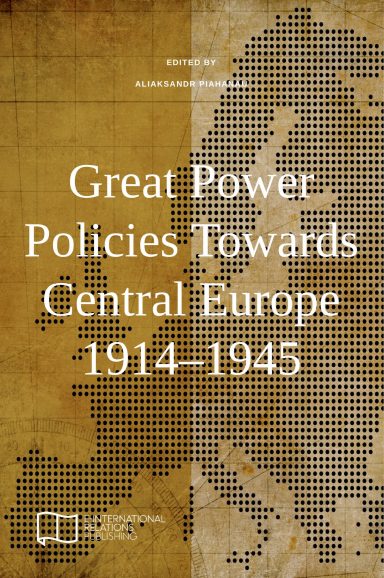This book provides an overview of the various forms and trajectories of Great Power policy towards Central Europe between 1914 and 1945. This involves the analyses of diplomatic, military, economic and cultural perspectives of Germany, Russia, Britain, and the USA towards Hungary, Poland, the Baltic States, Czechoslovakia and Romania. The contributions of established, as well as emerging, historians from different parts of Europe enriches the English language scholarship on the history of the international relations of the region. The volume is designed to be accessible and informative to both historians and wider audiences.
Great Power Policies Towards Central Europe 1914–1945
Edited by: Aliaksandr Piahanau
Contributors: Sorin Arhire, Ivan Basenko, Agne Cepinskyte, Oleg Ken, Tamás Magyarics, Halina Parafianowicz, Alexander Rupasov, Ignác Romsics and Artem Zorin.
Table of contents
INTRODUCTION
– Aliaksandr Piahanau
HUNGARY’S PLACE IN GERMAN SOUTH-EAST EUROPEAN POLICY, 1919–1944
– Ignác Romsics
MOSCOW AND THE BALTIC STATES: EXPERIENCE OF RELATIONSHIPS, 1917–1939
– Oleg Ken and Alexander Rupasov
BALANCING IN CENTRAL EUROPE: GREAT BRITAIN AND HUNGARY IN THE 1920S
– Tamás Magyarics
BRITISH POLICY TOWARDS ROMANIA, 1936–41
– Sorin Arhire
AMERICAN POLICY TOWARDS CZECHOSLOVAKIA, 1918–1945
– Artem Zorin
THE GREAT WAR AND THE POLISH QUESTION IN IMPERIAL RUSSIA: A CASE STUDY OF ITS REFLECTIONS IN KIEV’S PRESS, 1914–1917
– Ivan Basenko
THE BALTIC DREAM OF A ‘HANDICAPPED’ GREAT POWER: THE WEIMAR REPUBLIC’S POLICIES TOWARDS THE BALTIC-GERMANS
– Agne Cepinskyte
HERBERT C. HOOVER AND POLAND, 1929–1933: BETWEEN MYTH AND REALITY
– Halina Parafianowicz
